Multiple Myeloma Experts Face Off on Sequencing Therapy Options
Experts in multiple myeloma gathered to debate current treatment options in the space during a recent Face Off.
Meet the experts
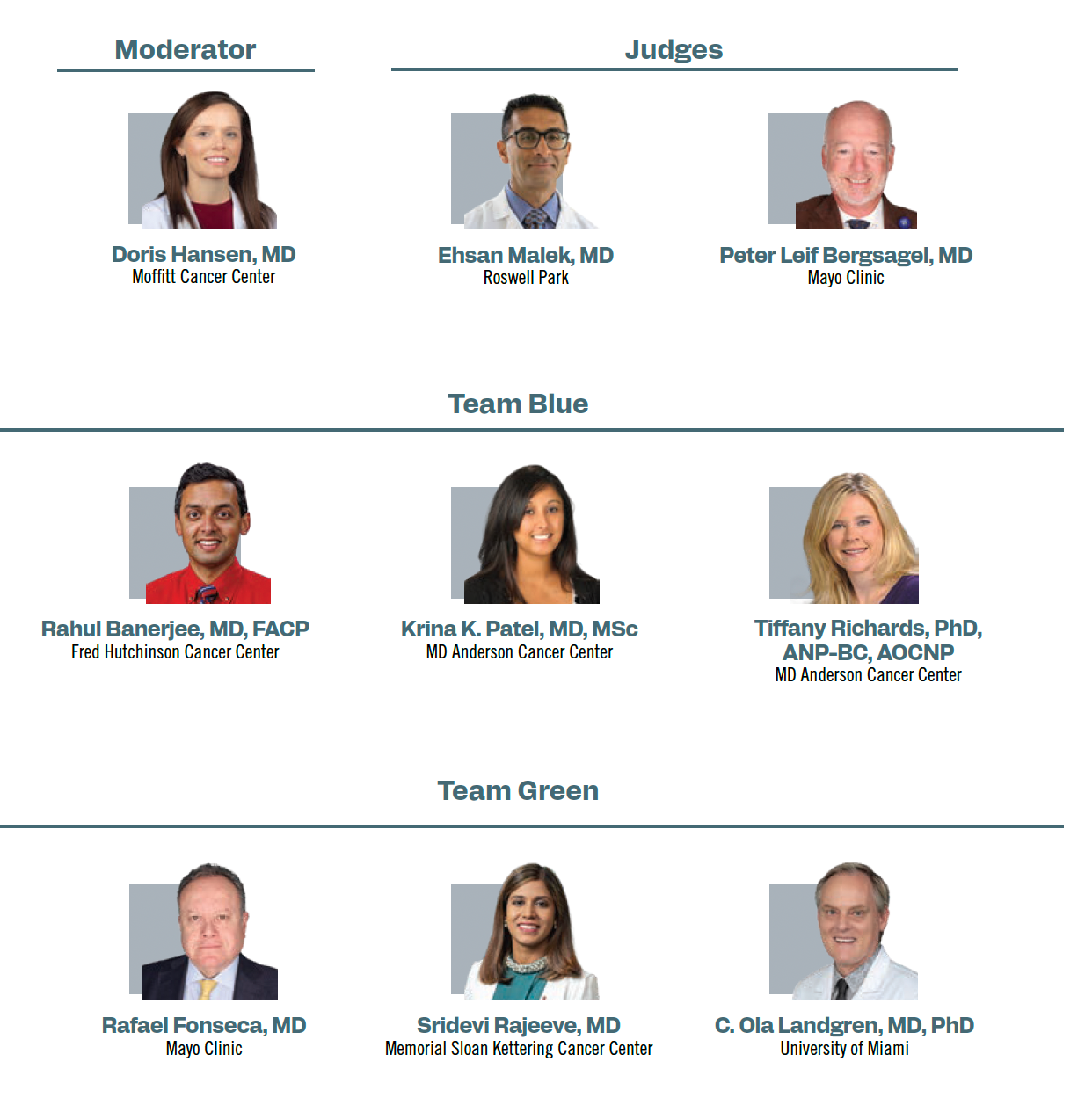
At the 2024 International Myeloma Society Annual Meeting, experts in multiple myeloma gathered to debate current treatment options in the space. The teams competed in 3 key areas: recent trial updates, patient cases, and sequencing options.
What Is Face-Off?
An educational program designed as a competition for teams to present to and against each other.
How Does It Work?
There are 3 rounds: data presentations, patient cases, and hot topics. During each round, both teams will have the chance to present and defend their ideas but also challenge the other team. The judges will determine who is worthy of the top prize.
Round 1: Data Presentation
Team Green and MonumenTAL-1 Trial Updates
Presented by Sridevi Rajeeve, MD
Updated findings from the phase 1/2 MonumenTAL-1 trial (NCT04634552) assessed talquetamab-tgvs (Talvey) in patients with relapsed/refractory multiple myeloma.1 Topline data presented at the 2024 European Hematology Association (EHA) Congress showed that efficacy and safety were maintained if used before or after chimeric antigen receptor (CAR) T-cell therapy or bispecific antibody therapy for patients who had triple-class exposure.
A total of 297 patients were enrolled and given the recommended phase 2 dose of 0.8 mg/kg every 2 weeks (n = 154) or 0.4 mg/kg every week (n = 143). At the 23.4-month follow-up, those in the 0.8-mg/kg group had a median duration of response (DOR) of 17.5 months. In the 0.4-mg/kg arm, at the median follow-up of 29.8 months, the median DOR was 9.5 months. At 24 months, between both arms, 67.1% and 60.6% of patients were alive.
For patients with prior T-cell redirection therapy (n = 78), at the median follow-up of 20.5 months, 55.1% of patients had a very good partial response or better, with 57.3% of patients alive at 24.2 months.
Infection rates were similar to those of previous reports. There was no increase in grade 3/4 infections, and the longer follow-up of the GPRC5D therapy because of adverse effects allowed for fewer dose reductions and discontinuations. Of note, weight loss was evident in early reports but stabilized and improved over time, including in patients with oral toxicities.
Team Blue to Question on Real-World Efficacy
Banerjee / In 5 years, where would you like to see the world? What do you think we’ll be using as our guidelines for who should go from one BCMA [agent] straight to another? Do you think it’s time, or will other factors go into it? How would you choose now, and how would you choose maybe 5 years from now?
Rajeeve / Right now, we have an embarrassment of riches. We have so many different therapies, and going from [one] BCMA [agent] to [another] BCMA [agent] is a matter of a lot of factors. What have they received before? What have they been exposed to before? What are other patient factors? Can they get another CAR T-cell therapy? Will there be insurance challenges to getting a second CAR T-cell therapy? There’s going to be a combination of factors. A lot of us are familiar with factors that lead to BCMA resistance and based on the data we have and based on some of the resistance to BCMA data we have, I would incline to give a little space and time between 2 different BCMA-directed therapies. Not to say that we can never do that again, but spacing out the sequence and not following rapidly would be an approach. I also defer to my colleagues over here.
Landgren / I would agree. Time is very important, and it’s not different from most other drugs we give. If we think about using immunomodulatory drugs or CD38-targeted antibodies, if you go back-to-back vs space it out, then you can come back. Usually, [for] those drugs, we would give in combinations. I also think there are data for BCMA circulation in the blood. We don’t have the tools and the acquisition of hotspot mutations where you lose the target for the binding site on the BCMA. We need to work more on biomarkers. Time, for now, is the best we have.
Team Blue on KarMMa-3 Updates
Presented by Krina K. Patel, MD, MSc
Idecabtagene vicleucel (ide-cel; Abecma) was studied in the phase 3 KarMMa-3 trial (NCT03651128) vs standard-of-care (SOC) therapy for patients with relapsed/refractory multiple myeloma after at least 2 prior lines of therapy that included an immunomodulatory agent, a proteasome inhibitor, and an anti-CD38 monoclonal antibody.2
This regimen was approved by the FDA in April 2024.3 At a median follow-up of 15.9 months, the median progression-free survival (PFS) was 13.3 months (95% CI, 11.8-16.1) in the ide-cel arm vs 4.4 months (95% CI, 3.4-5.9) in the SOC arm (HR, 0.49; 95% CI, 0.38-0.64; P <.0001).
The current recommended dose of ide-cel is 300 to 510 × 106 CAR-positive T cells. Boxed warnings for toxicity include cytokine release syndrome, neurologic toxicities, hemophagocytic lymphohistiocytosis (HLH)/macrophage activation syndrome, prolonged cytopenia, and secondary hematological malignancies.
The most common toxicity was cytokine release syndrome, with a median time to onset of 1 day, and 83% of these events were grade 1/2. Additionally, 15% of patients had grade 1/2 immune effector cell–associated neurotoxicity syndrome. Investigators noted there were no cases of Guillain-Barré syndrome or parkinsonism.
Team Green on Choosing Ide-Cel in This Population
Fonseca / We always say you can’t compare trials, but we do all the time. There are 2 different populations between the phase 3 CARTITUDE-4 trial [NCT04181827] and KarMMA-3. What is the elevator speech that you tell people as you compare patient populations? They always want us to do 4 [lines of therapy] or 1 to 3 prior lines of therapy. What else makes a difference [where] you would say this is the one thing that you should be cautious about with your comparisons?
Patel / Response and efficacy are what we always look for, and they’re great, but the bigger thing is the toxicity and the standard-of-care arms. This patient population had CD38 [treatment], so I don’t know how much of a difference that would’ve made for that standard-of-care arm vs in CARTITUDE-4. That’s a bigger question. These patients did not have CD38 antibodies. The SOC is what was allowed, but not necessarily the SOC we all have access to for these patients. Toxicity comes back. That is the main thing I talk to my patients about. Should we be doing [treatment] earlier vs later? Toxicity wise, we don’t see major issues with neurotoxicity or even infections and other things that we’ve looked [at] down the road as we do with some bispecific therapies. It is higher maintenance. It does require intravenous immunoglobulin [IVIG] and prophylaxis. It is a different therapy option, but having said that, it’s also the quality of life. When you look at the quality-of-life data for these trials…it is much improved with CAR T-cell therapy compared with any SOC. I talk about all that [with my patients], and then we decide on CAR T-cell therapy.
Landgren / Are there any other major study design differences if you look across these 2 studies? You mentioned that there are differences in the number of lines: 1 to 3 vs 2 to 4. That’s a big difference because if you have a patient going off a later line, we know historically that the outcome is much worse. There are other factors as well for extramedullary disease. Could you give us some more detail on that?
Patel / The extramedullary [disease] was a little higher [in] KarMMa-3 [findings]. The way they looked at the intention-to-treat [population] is very different with CARTITUDE-4 vs KarMMa-3. The intention to treat was 8 weeks after CARTITUDE-4 [treatment]. It took out some of the patients who didn’t make it to CAR T cells, etc. It wasn’t the same population of patients who got cells or were supposed to get cells who were included in CARTITUDE-4 vs in KarMMa-3. They were all included.
Landgren / How much is the difference driven by drug and how much is the difference driven by study design? Because these are big differences in study design.
Patel / There is a big difference. The PFS is very different. Again, until you do a head-to-head [comparison], I can’t tell you, because there are so many different variables. I will say when we take patients earlier, we can get them to bridging. As we showed even today, fewer patients had a response to bridging in KarMMa-3 compared with CARTITUDE-4 as well. There are so many differences that I can’t add up and tell you exactly which patient was what, but a head-to-head trial or eventually looking at patients in the early line, like the first line, will hopefully help with some of that. It would be great if people did trials similarly to each other so that we could take away data.
Round 2: Patient Cases
Team Green on Ide-Cel and Triple-Class–Exposed Population
Presented by C. Ola Landgren, MD
Patient Case #1
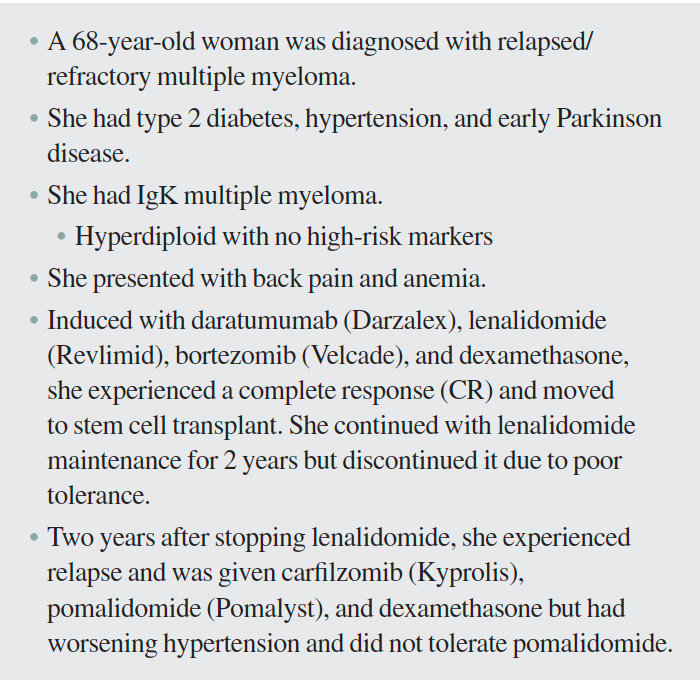
Richards / How did you have that discussion with her to go between a bispecific vs moving on to CAR T? How did that conversation go, and how did you approach the patient with the options?
Landgren / In the setting of a patient [experiencing relapse] like this in my clinic, I will always involve all patients in the decision-making. I’ve done it for many years, and I’m sure we all do similarly. I tell the patient we have the antibodies that could be repeated [in an] outpatient [setting] or a CAR T-cell [therapy] that’s a little more involved. You could be off treatment for hopefully a longer period, although we cannot give a 100% promise. Just look at the patient, the body language, and the communication because you have a relationship with the patient. I would involve the patient very much in that. I feel in my clinic that very often, the patient [knows] what they want.
Bergsagel / Not too many years ago, if someone had a 4-year remission following transplant, we discussed the second stem cell transplant. Where do you see that fitting in today?
Landgren / We have a lot of options. If you look at the National Comprehensive Cancer Network guidelines, there are 30 or 40 different combinations that you can pick and choose [from]. You could always consider the second transplant. In light of all other options in my clinic, [stem cell transplant] is probably not the most frequent choice. In fact, we would do that very rarely.
Team Blue on Cilta-Cel Therapy
Presented by Tiffany Richards, PhD, ANP-BC, AOCNP
Patient Case #2
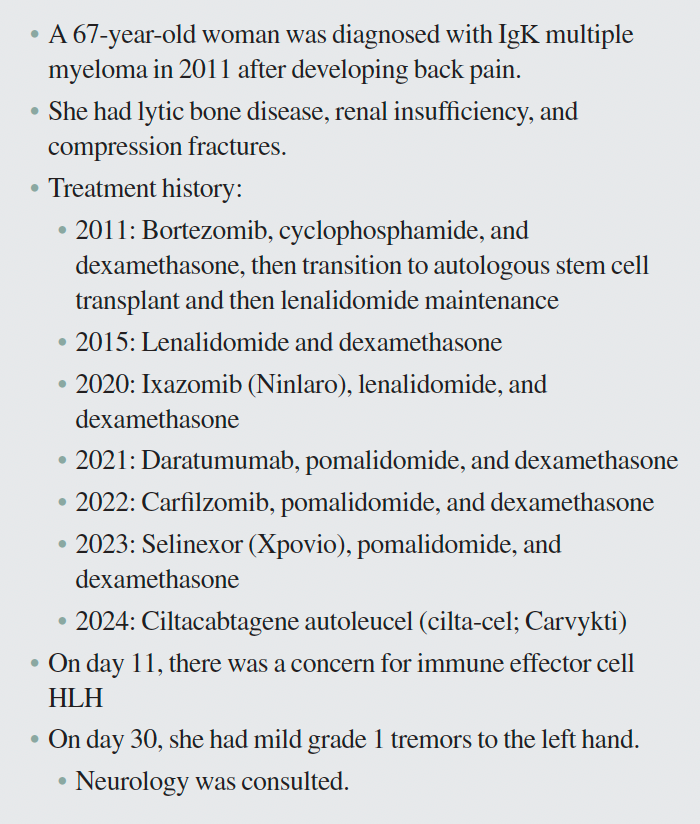
Patient Case #2 continued
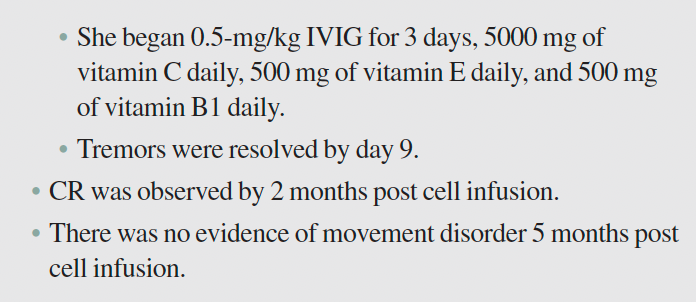
Rajeeve / It’s wonderful that she was [treated] very well. It sounds like she was identified as being at risk for HLH and [treated] promptly. We can see a nice downtrend of all the biomarkers, and again, [she was] identified as having an early grade 1 movement disorder and [given] neurology input. As is the nature of a lot of neurotoxicities and movement disorders, it was transient and ended up having a full resolution. This case illustrates how a very heavily pretreated patient went on to receive cilta-cel. [This case] checked off all the boxes of adverse effects one can anticipate and can have. Long-term follow-up is going to be more challenging.
Hansen / This patient did well, but what if they hadn’t? What other management options would you provide to this patient?
Banerjee / We have tried it [with] chemotherapy without much luck. There is a case in Blood or Blood Advances of high-dose cyclophosphamide to abrogate the CAR T cells entirely, and that seems to work. One could argue that this patient has a lot to lose with continued [therapy] if tremors haven’t gotten better, and that’s a very difficult quality of life there already.
Round 3: Hot Topics
Team Green on Giving Bispecifics Before CAR T-Cell Therapy
Presented by Rafael Fonseca, MD
I’m going to talk to the audience about why people should use bispecifics before CAR T-cell therapy. For disclosure, I don’t necessarily believe everything I want to tell you, but there’s going to be a performative aspect to this even though the arguments are what lawyers would [call] self-evident.
The case we just discussed exemplifies the complexities of the care of patients with CAR T-cell therapy. CAR Ts are amazing. As you saw in the previous presentations, we’re seeing CAR T responses now in the 80% range. Because of the selection bias, the patients are getting into those CAR T products. The reality is for most patients, bispecifics will be a better option, and the community has to be ready to use bispecifics. I make the argument that community hospitals and small practices need to be ready to administer bispecifics.
Earlier this year, we saw the first approval of a bispecific for small cell lung cancer. This will become the bread and butter of the oncology practices, and it’s not going to be restricted to the very sophisticated academic centers and larger hospitals. I think this is the way, and many more patients will get the benefit of T-cell engagement vs what we’re seeing with CAR T. Furthermore, a lot of what we have seen with the CAR T shows all these complexities, the collection of cells, the aspects of what you do for bridging. Whereas with bispecifics, you can start the same day. You make the decision assuming you have the team.
We have seen now with bispecifics that the responses are first quite profound, but they can also be quite durable. We’ve seen the data for patients who are able to achieve a complete response and the durability of that response. Everyone was quite impressed when we saw long-term outcomes from the phase 2 MajesTEC-1 trial [NCT04557098] as well as the phase 2 MagnetisMM-3 trial [NCT04649359] presented at EHA where if you have a CR, for instance, you might have 90% of patients without progression in 2 years. Those results challenge any cell product that we have. When I think about the reason why we have to use bispecifics, many more patients will have access to bispecifics, and that’s not only at the national level, but it’s also at the global level. Think about stem cell transplant. How many patients who are eligible for stem cell transplants can get stem cell transplants? We know it’s a minority. Many more patients could get stem cell transplants than they do, and I would argue that it’s simpler from the logistic perspective. It’s not simpler from the toxicity perspective. The stem cell transplant carries more toxicity than a CAR T, but it’s something that can be done more easily.
I understand there are some data that suggest that if you use a bispecific and a CAR T, you might not get the benefit of the CAR T, but part of this is also historic and how we have developed this product. With the benefit we’re seeing with bispecifics and particularly moving to combinations both with bispecifics [and] other small molecules, other antibodies, let’s think about the trispecifics. That will ultimately change the world much more than CAR T.
Team Blue on CAR T-Cell Therapy Before Bispecifics
Presented by Krina K. Patel, MD, MSc
Unfortunately, none of our therapies cure our patients. In reality, logistics right now make it easier to give bispecifics, not necessarily to all the community [physicians]. There’s still a lot of learning curve there, and they still require hospitalization for most of these places. If you get an infection, with toxicity being higher with bispecifics long term, there’s a lot of management that goes along with it, and a lot of my patients are coming back to me for that management. They’re not necessarily able to treat cytomegalovirus pneumonia and make sure that they’re being evaluated for potential adenovirus in the liver and things like that. I agree that bispecifics logistically seem to be easier, but long term, we need to find a way to give the best therapy to all our patients.
Access is an issue. Without a cure, the question is both options. Our patients are going to need something when they’re [experiencing relapse with] either of these therapies. We talked about KarMMa-3, the PFS2 [PFS to second disease progression or death], right? We don’t have any data from bispecifics that the PFS2 is improved post bispecific therapy vs CAR T. The International Myeloma Working Group agrees with CAR T first; they’ve had this on their website. Patients who are eligible for both CAR T and T-cell engagers should be considered first for CAR T-cell therapy. We talked about response rates, we talked about PFS and PFS2, and previous exposure to other BCMA-targeted therapy could negatively affect clinical response. We’ve seen that in [findings from] small studies.
Are we going to wait for the patients currently? I know eventually the bispecifics will catch up, but until then, we don’t offer something just because it’s easier to give something in a later line. Better efficacy with CAR T before bispecifics [was observed]. With CAR T therapy, we know the quality of life is much improved. During that time they’re in remission without any active therapy, they need some IVIG and anti–P-glycoprotein, but that’s usually the first 6 months, and after that, they’re doing great. Most of my patients who [experience] relapse after CAR T say, “When’s the next CAR T that I can get?” When I give them a bispecific, they say, “When’s the next CAR T I can get now? Please put me back on a CAR T. I don’t want to continue this therapy.”
Again, should [physicians] use bispecifics first in a patient who receives CAR T? Rarely. We talked about this before. If someone has an actively growing disease that is relapsed, you can potentially debulk, with bridging, which we talked about earlier today, with talquetamab or other therapies to get a better response for CAR T and less toxicity. For the majority of patients, CAR T would be the better option in terms of therapy treatment, not just bridging.
And the winner is...
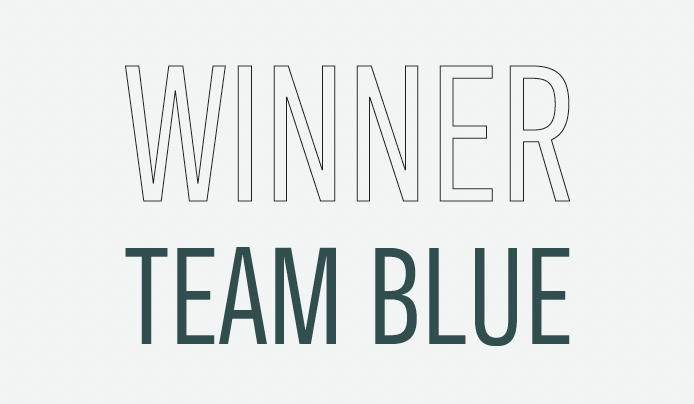
References
- Talvey (talquetamab-tgvs) demonstrates highly durable, longer-term responses in patients with relapsed or refractory multiple myeloma. News release. Johnson & Johnson. June 14, 2024. Accessed October 14, 2024. https://shorturl.at/tBKNc
- Rodriguez-Otero P, Ailawadhi S, Arnulf B, et al. Ide-cel or standard regimens in relapsed and refractory multiple myeloma. N Engl J Med. 2023;388(11):1002-1014. doi:10.1056/NEJMoa2213614
- U.S. FDA approves Bristol Myers Squibb and 2seventy bio’s Abecma for triple-class exposed relapsed or refractory multiple myeloma after two prior lines of therapy. News release. Bristol Myers Squibb. April 5, 2024. Accessed October 14, 2024. https://shorturl.at/abglC
EP: 1.Reviewing the Approval Process of Teclistamab in Multiple Myeloma
EP: 2.Multiple Myeloma and ALL Experts Face Off in Data Analyzing Cilta-Cel and Ponatinib Hydrochloride
EP: 3.ASH 2023: The Most Relevant Multiple Myeloma Data Presented
EP: 4.ODAC Casts 11 to 0 Vote in Favor of Cilta-Cel in R/R Multiple Myeloma
EP: 5.Ide-Cel Receives Favorable ODAC Vote for R/R Multiple Myeloma
EP: 6.FDA Approves Ide-Cel in Previously Treated Multiple Myeloma
EP: 7.FDA Approves Cilta-Cel for Relapsed/Refractory Myeloma After 1 Therapy
EP: 8.Managing Cranial Nerve Impairment in Multiple Myeloma Following Cilta-cel
EP: 9.APPs Focus on Education of Talquetamab Use and Administration in Multiple Myeloma
EP: 10.Belantamab Mafodotin Combo Shows PFS Improvement in R/R Multiple Myeloma
EP: 11.Daratumumab Retreatment Yields Sustained Response in R/R Multiple Myeloma
EP: 12.Step-Up Teclistamab Dosing Produces Responses in R/R Multiple Myeloma
EP: 13.Building On Outcomes With Isatuximab in Newly Diagnosed Myeloma
EP: 14.Continued Success of Venetoclax in t(11;14) Multiple Myeloma Despite Negative Trials
EP: 15.Leveraging CAR T-Cell Therapy Advancements in R/R Multiple Myeloma
EP: 16.FDA Approves Subcutaneous Daratumumab Regimen in Newly Diagnosed Multiple Myeloma
EP: 17.Bispecific Antibodies Are Taking the Multiple Myeloma World by Storm
EP: 18.MRD May Predict Improved Outcomes in Multiple Myeloma
EP: 19.Evaluating the Use of CAR T-Cell Therapy for Multiple Myeloma in Academic and Community Settings
EP: 20.Linvoseltamab Still Efficacious Despite CRL in Multiple Myeloma
EP: 21.Exploring GPRC5D as an Important Target for Multiple Myeloma
EP: 22.Long-Term Data Affirm Enduring Responses With Teclistamab in R/R Multiple Myeloma
EP: 23.Determining Administration of BCMA, T-Cell Engagers in R/R Multiple Myeloma
EP: 24.Optimizing AE Management Post CAR T-Cell Therapy in Multiple Myeloma
EP: 25.Assessing NP Roles in Talquetamab Treatment for Multiple Myeloma
EP: 26.Daratumumab Combo Yields MRD-Negative Status in Transplant-Ineligible NDMM
EP: 27.Mitigating Adverse Effects Following GPRC5DTargeted Therapy in Multiple Myeloma
EP: 28.Managing Toxicities Following BCMA-Directed Immunotherapy for Myeloma
EP: 29.Using Real-World Data to Form GPRC5D Therapy Strategies in R/R Multiple Myeloma
EP: 30.Optimal Sequencing Between CAR T and Bispecifics in Multiple Myeloma
EP: 31.Multiple Myeloma Experts Face Off on Sequencing Therapy Options
EP: 32.D-VRd Regimen Sustains MRD Response In Newly Diagnosed Multiple Myeloma Subgroup
EP: 33.Maintenance Teclistamab Yields Preliminary Activity in NDMM
EP: 34.General Lifestyle Recommendations for Receiving Talquetamab in Multiple Myeloma
EP: 35.Belantamab Mafodotin Regimen Improves OS in R/R Multiple Myeloma
EP: 36.Overall MRD Negativity Rates Improved with Cilta-cel vs SOC in MM
EP: 37.Fostering Academic, Community Practice Collaboration for Bispecific Therapy in Multiple Myeloma
EP: 38.Experts Discuss Choosing Bispecifics and Sequencing Options in Multiple Myeloma
EP: 39.CAR T-Cell Therapy Is a Desirable Option in Second-Line Multiple Myeloma
EP: 40.Appropriately De-Escalating Talquetamab to Monthly Dosing in Multiple Myeloma
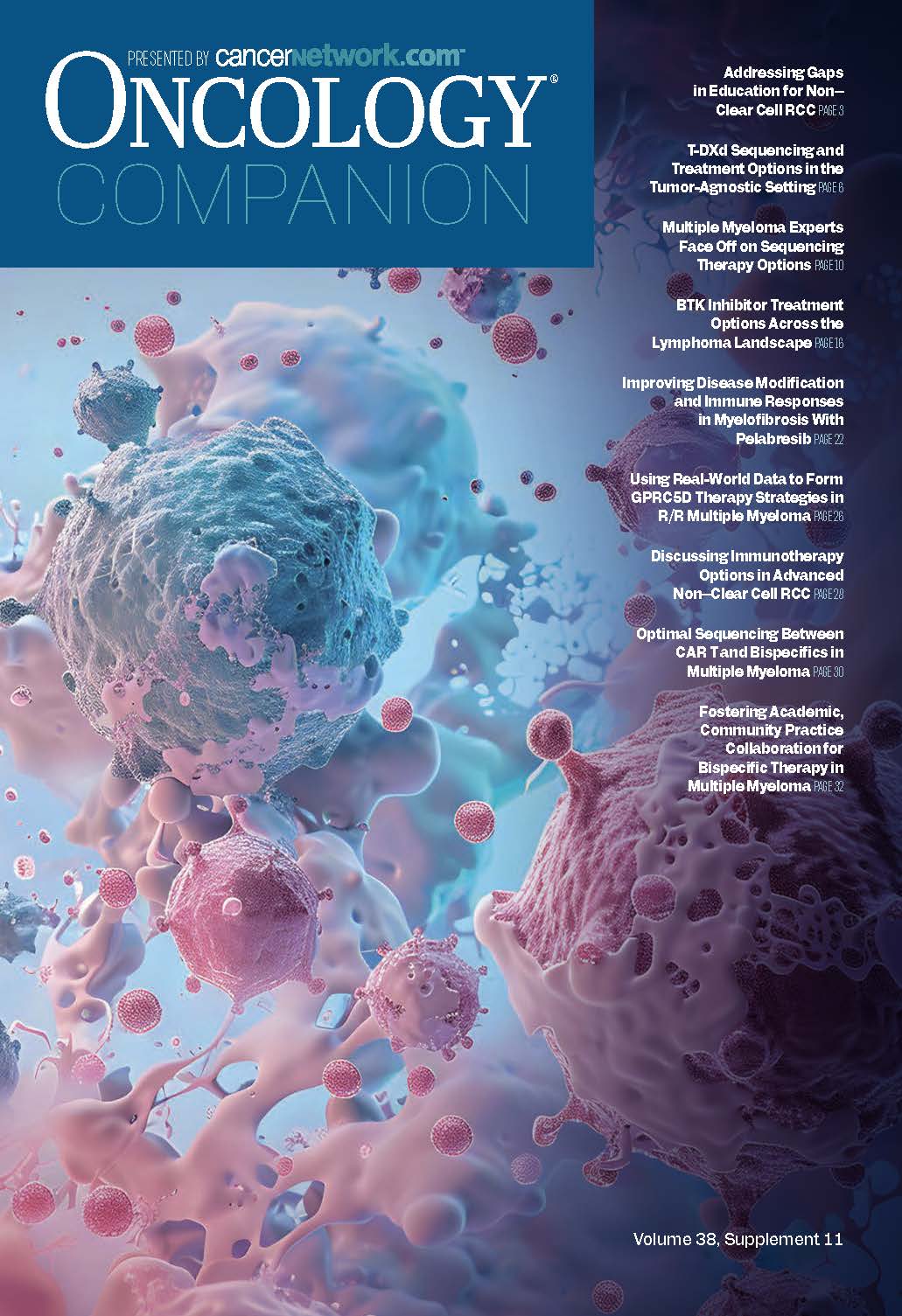
Navigating AE Management for Cellular Therapy Across Hematologic Cancers
A panel of clinical pharmacists discussed strategies for mitigating toxicities across different multiple myeloma, lymphoma, and leukemia populations.
Late Hepatic Recurrence From Granulosa Cell Tumor: A Case Report
Granulosa cell tumors exhibit late recurrence and rare hepatic metastasis, emphasizing the need for lifelong surveillance in affected patients.